 Hello, gentle readers, and welcome to the RPG Reload. This week, we’re continuing our little monthly project looking at the history of handheld RPGs. That means that we will not be taking a look at a specific RPG from the App Store’s past this time around. Last month, we looked at the Nintendo 3DS, a machine that had some trouble finding its footing initially. In the long run, it has proven to be quite the little RPG machine, however. If you thought that tale was harrowing, however, you haven’t seen anything yet. This month, we’re looking at the other side of the current generation of dedicated handheld gaming hardware, the PlayStation Vita.
Hello, gentle readers, and welcome to the RPG Reload. This week, we’re continuing our little monthly project looking at the history of handheld RPGs. That means that we will not be taking a look at a specific RPG from the App Store’s past this time around. Last month, we looked at the Nintendo 3DS, a machine that had some trouble finding its footing initially. In the long run, it has proven to be quite the little RPG machine, however. If you thought that tale was harrowing, however, you haven’t seen anything yet. This month, we’re looking at the other side of the current generation of dedicated handheld gaming hardware, the PlayStation Vita.
In total, this feature will span twelve columns, each one taking a look at a specific era in handheld RPGs. That means we’re on the second-last installment, with our ride coming to a close next month. I hope you’ve enjoyed reading them as much as I’ve enjoyed researching and writing them! Please let me know what you think by commenting below, posting in the Official RPG Reload Club thread, or by tweeting me at @RPGReload. If you like this project and wish to support endeavors like it, please consider contributing to the TouchArcade Patreon. It’s what makes these kinds of big features possible.
It should go without saying that tabletop, computer, console, handheld, and mobile games are all inextricably tied with each other in various ways. To consider how other platforms contributed to handheld RPGs in these articles would grow them well beyond the scope I’m able to deal with. I’ll be mentioning some influences here and there, but this is basically a disclaimer that I’m aware handheld RPGs don’t exist in a vacuum, in spite of the relatively narrow historical focus of these articles.
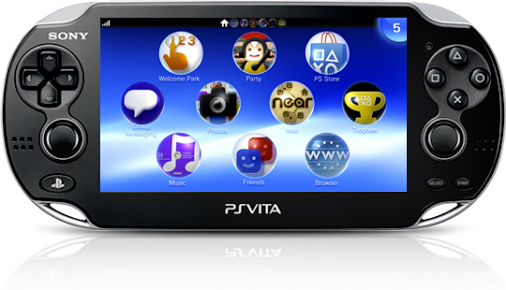
The History of Handheld RPGs, Part Eleven – Re-Vita-lization
The results of Sony’s PlayStation Portable were pretty odd. People had high hopes and expectations for the machine, and it certainly didn’t live up to most of those. It came blazing out of the gates worldwide but dropped off heavily before making an excellent recovery in Japan, bringing it to a very respectable close. All told, the PSP was the most successful non-Nintendo gaming handheld in history, and the third-highest selling gaming handheld ever, coming in just ahead of the Game Boy Advance but behind the Game Boy and Nintendo DS. Based on that alone, a follow-up made good sense.
But there were a lot of red flags to heed, as well. By the end of the PSP’s life, mobile gaming had become a major force. The PSP may have turned things around successfully in Japan, but in the rest of the world, the machine had barely hung on for most of its years. Even in Japan, its reversal in fortune could largely be attributed to Monster Hunter catching on, a miracle if there ever was one. On top of all of that, Sony’s star had faded considerably in the game industry thanks to the roller coaster of the PlayStation 3 years and the PSP’s uneven results. There would be no editorials about writers eating their children’s sneakers if the PSP’s follow-up wasn’t the biggest thing ever, and Western publishers were under no illusions about Sony’s ability to reach their usual demographics in large enough quantities to merit serious software support.
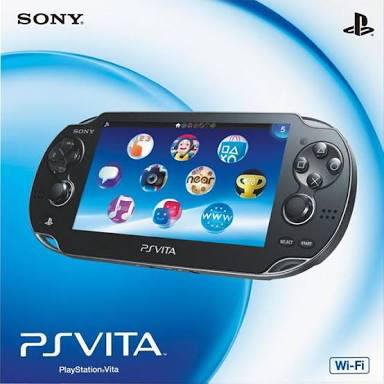 Inertia is a powerful thing, however, and the PSP’s successor was likely in development long before any of these issues became sufficiently large. When the 3DS appeared to fumble, it seemed like there might even be a chance for Sony to swoop in. The hardware they developed was certainly impressive enough, with a gorgeous screen, considerably more powerful technology than the 3DS, and all the touch panels you could ever want. The source of many of the PSP’s woes was jettisoned with UMD media being replaced by cartridges. But Sony made a number of mistakes with their PSP successor, and while it’s hard to say if things would have gone terribly differently had they done a few things another way, they certainly didn’t do themselves any favors by making these errors. More on those in a second.
Inertia is a powerful thing, however, and the PSP’s successor was likely in development long before any of these issues became sufficiently large. When the 3DS appeared to fumble, it seemed like there might even be a chance for Sony to swoop in. The hardware they developed was certainly impressive enough, with a gorgeous screen, considerably more powerful technology than the 3DS, and all the touch panels you could ever want. The source of many of the PSP’s woes was jettisoned with UMD media being replaced by cartridges. But Sony made a number of mistakes with their PSP successor, and while it’s hard to say if things would have gone terribly differently had they done a few things another way, they certainly didn’t do themselves any favors by making these errors. More on those in a second.
The PlayStation Vita was announced in January of 2011, several weeks ahead of the release of Nintendo’s new handheld. At the time, it was announced under its codename, Next Generation Portable. More details came out over the next few months, both from official channels and through the rumor mill, but it seemed clear that the machine was going to be extremely powerful and loaded with features. The machine was formally announced as the PlayStation Vita at E3 2011 in June of that year, with a release date in Japan coming later in 2011 and in other regions in early 2012. While the Vita launched well in all regions, it dropped off very quickly and very dramatically. A redesign in 2013 helped things a little, particularly in Japan, but most major publishers dropped support for the Vita quite early on, with even Sony themselves backing away from developing full-priced titles for the machine.
In spite of all of that, the Vita has survived to this day, subsisting on releases from mid-tier Japanese publishers and indie games from around the world. With the right kind of game, it can even be a safer market for developers than higher-selling devices like the 3DS or mobile phones. Was the machine a failure? Yes, I think it’s safe to say it was. But I think lots of companies would love to have failures like the Vita. Its fanbase is dedicated and consistent, so as long as developers scale their budgets appropriately and pay attention to what that fanbase goes in for, there’s definitely money to be made selling software on its admittedly small userbase. In the end, it will probably only have barely outsold SEGA’s Game Gear, but its library of software easily trumps all but a few handhelds in terms of sheer quantity. Clearly, something is going right over there.

The thing is, most Vita owners really do love the machine. It’s well-built and there are plenty of games on there to keep you entertained, particularly if it’s your primary gaming device. So why wasn’t it a bigger success? This is just me spit-balling, but I think in a lot of ways, there was a definite ceiling for the Vita regardless of what Sony did or didn’t do. Even the 3DS with all of Nintendo’s weight behind it is going to be their worst-selling handheld machine. The mobile market has absorbed a huge percentage of the market for handheld gaming, and that’s just how it is. Sony did make a few blunders that I believe kept the Vita from reaching its full sales potential. The proprietary memory cards are too small and too expensive. A lot of features that should have been there on day one, like full PS1 compatibility, took months to arrive. Most importantly, Sony wasn’t able to lock down a Monster Hunter game, which had a tremendous effect on the system’s chances in Japan.
Depending on how you look at the Vita, it’s either one of the best RPG systems ever made, or a bit flat. With nearly full access to the entire PSN PlayStation 1 library and the digital library of the PSP, the Vita’s RPG archives are unmatched by any other handheld. You can play the entire Final Fantasy series up to Final Fantasy X-2 on the Vita. You can play the entire Persona series on the Vita. Breath of Fire games. Almost the whole Ys series. Trails in the Sky and its sequels. Suikoden 1 and 2. It’s an embarrassment of riches for anyone who hasn’t stayed caught up on RPGs or those who like to replay the classics. Simply put, there is no other handheld that offers the massive and varied RPG library that the PlayStation Vita has access to.
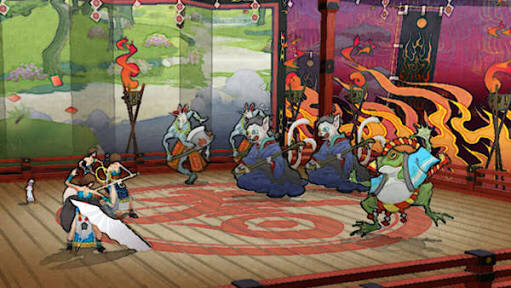
On the other side of the coin, if you have stayed relatively current with most RPGs and have no desire to revisit them, the Vita has a lot less to offer. It’s home to many ports, emulations, and even a few remakes, but in terms of high-quality exclusive content, things are shakier. Some of Falcom’s games, like Ys: Memories of Celceta, are exclusive to the machine. A few gems, like Sony’s Oreshika: Tainted Bloodlines and , are scattered here and there. For the most part, however, the Vita’s exclusive RPG line-up fits into a pretty small box. There’s an absolute glut of moe anime games of middling quality, with a disproportionate amount of them being first-person dungeon crawlers, for whatever reason. If you’re into the characters or style of these games, there are plenty that are decent enough, but nothing particularly exceptional.
That said, while I know there are some out there who really have played everything worth playing among the Vita’s non-exclusive line-up, I think most people can find plenty of games worth playing that they might have missed on earlier platforms. Atlus’s Persona 4 released late in the PlayStation 2’s life, well after the release of the PlayStation 3, so I suspect a lot of people encountered it for the first time in its Vita-enhanced port, Persona 4 Golden. Quality games that flew under the radar on other platforms, like the Atelier series, got a second chance on Vita. Plus, there’s the fact that while many of these RPGs have been released on consoles before, this is their first time being on a handheld. There’s no question that there’s a certain flavor to much of the Vita RPG spread, however, and if you’re squeamish about risque content, it’s an absolute minefield out there.

The first year of the Vita was fairly dry for RPG releases, particularly outside of Japan. In the year 2012, we got a Dungeon Hunter game from Gameloft and a Ragnarok game from Game Arts, but neither were particularly worth writing home about. NISA provided a port of Disgaea 3 that turned out fairly well. The big release for the year was in November with the arrival of Persona 4 Golden, a fantastic game that surely pleased many a Vita-owning RPG fan. The second year was a little better, with Atelier Totori Plus arriving in March of 2013, action-RPG Soul Sacrifice coming the next month, and a pair of Vanillaware action-RPG ports, Dragon’s Crown and Muramasa Rebirth, heating up the summer. October saw the release of Atelier Meruru Plus, and November’s big release was Ys: Memories of Celceta, the latest in the line of action-RPGs from Falcom. 2013 was also the year that Dragon Fantasy migrated from mobile to Vita, with a port of the first game and a timed exclusive for Book 2. The solid strategy RPG Rainbow Moon closed out the year on PSN in December, while at retail the quirky roguelike Sorcery Saga: The Curse of the Great Curry God kept the fires burning.
The year 2014 got off to a decent enough start with the release of Final Fantasy X/X-2 HD Remaster in March, which brought the two excellent RPGs to handhelds for the very first time. The first original RPG release of the year came in April with the dismal Conception 2: Children of the Seven Stars, a mediocre dungeon-crawler with a bizarre premise. It turns out that would set the pace for many releases to come. Luckily, many of them were better than Conception. Just one week after that game released, a better dungeon crawler called Demon Gaze came out. It’s nowhere near Etrian Odyssey‘s level, but it’s a pretty good time if you like first-person labyrinth exploration. The amped up semi-sequel Soul Sacrifice Delta dropped in May, and another Atelier game, Atelier Rorona Plus, released in July, helping to wash away the taste of dreadful Persona wanna-be Mind Zero, which had come out in late May.
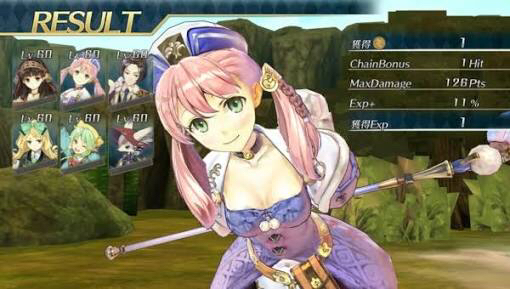
The rest of the year was up and down. Sword Art Online was pretty weak outside of its obvious charms, while Hyperdimension Neptunia Re;Birth 1 whipped the disappointing original into a somewhat playable state. NISA brought a port of Disgaea 4 in August. Freedom Wars was another attempt to chase the Monster Hunter train to little success, while Tales of Hearts R, Vita’s big November RPG release, certainly was a Tales game. On PSN, a port of the mobile game Pocket RPG arrived in late November, along with the repetitive action-RPG Fantasy Hero. All told, the best original RPG released for the system in 2014 was Demon Gaze, and I’m not sure that’s exactly worth cheering for. Fortunately, the next year was a bit better.
January 2015 was a busy month for Vita RPG fans. First, there was the latest Atelier port, Atelier Ayesha Plus. A week later, the Earthbound-inspired Citizens of Earth came out on PSN, and a week after that, Hyperdimension Neptunia Re;Birth 2 released, remaking the second game in the series. February led off with the bizarre Criminal Girls, a game where you punish cute anime girls to motivate them. Well, whatever blows your hair back. Neptunia strategy RPG spin-off Hyperdevotion Noire finished out the month, and March saw the release of one of the best exclusive RPGs the Vita has to offer, Sony’s Oreshika: Tainted Bloodlines. A sequel to a Japan-only PlayStation 1 game, Oreshika is unlike just about any other RPG. It’s one of the essentials of the system’s library, as far as I’m concerned. Ubisoft’s wonderful Child of Light arrived on Vita at the end of March.
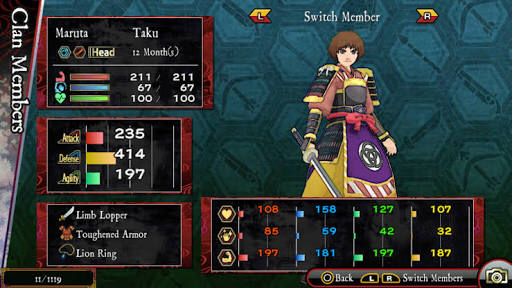
Apart from a couple of iffy dungeon crawlers, those games had to hold down the fort until late June, when Hyperdimension Neptunia Re;Birth 3 released. It was immediately followed by a port of Ar nosurge called Ar nosurge Plus. For the adventurous sort, Atlus released Dungeon Travelers 2 in August. Developed by experienced RPG developer Sting, this is probably the best dungeon crawler on the system. It’s also the most risque, by leaps and bounds, so don’t jump into it without knowing what you’re getting into. The remainder of 2015 had only two notable RPGs for the Vita. There was another Sword Art Online game from Bandai Namco, and the excellent Trails of Cold Steel from Falcom and XSeed. Oh, and lest I forget, the much-loved action-RPG Bastion finally saw release on Vita in December of 2015.
By comparison, 2016 has been a little bit bland. The year started off well enough with Atelier Escha & Logy Plus and Digimon Story Cyber Sleuth, but beyond that, it’s mostly been more mediocre dungeon crawlers. It’s not that Stranger of Sword City or Ray Gigant are particularly bad, but I can definitely see those who don’t like Wizardry-style games getting restless. Ports of XCOM: Enemy Unknown and Steamworld Heist have provided outlets for strategy fans, at least, and I’m pretty sure another Atelier game just came out, too. A gussied-up port of Odin Sphere also recently hit courtesy of Vanillaware and Atlus.
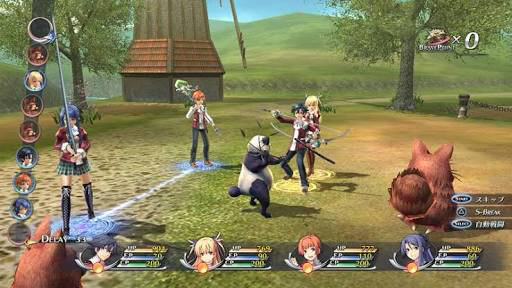
Nevertheless, the remainder of the year looks to be fairly strong. Namco Bandai is releasing God Eater 2: Rage Burst, for those who want a Monster Hunter-style game. Aksys is bringing the enhanced port of the fifth Shiren the Wanderer game over quite soon. Adventures of Mana just dropped out of the sky from Square Enix, and presumably Romancing SaGa 2 will be coming at some point, too. Square Enix is also releasing the Minecraft-inspired Dragon Quest Builders and the positively adorable-looking World of Final Fantasy this year. XSEED has another Legend of Heroes game coming in the form of Trails of Cold Steel 2, and Cthulhu Saves the World developer Zeboyd Games has the extremely promising Cosmic Star Heroine on tap. Japan is getting Ys 8 quite soon, so there’s a chance we’ll see that worldwide before year’s end, as well. Not bad for a nearly five-year-old system that looked dead by its third week on the market.
There are certainly a lot of RPGs to play on the Vita, but it’s hard to nail down what exactly its contributions are to the growth of handheld RPGs. The last generation of handhelds already started delivering console-like RPG experiences on the go, and unlike the 3DS, none of the Vita’s hardware gimmicks really took off in any meaningful way. Perhaps its most valuable contribution comes from its weak market position. With other fish to personally fry, Sony ended up courting a lot of indie developers and mid-sized developers, who otherwise hadn’t taken a strong interest in the handheld market, to come to the Vita’s aid. Sony was also a lot more open about what kinds of content could appear on their system than they had ever been before, and indeed more permissive than just about any console manufacturer outside of SEGA during the Saturn years. The results may not be to your personal liking, but there’s no doubt that the Vita library has had an influence on the kinds of RPGs we see coming out of the increasingly smaller non-mobile Japanese market.
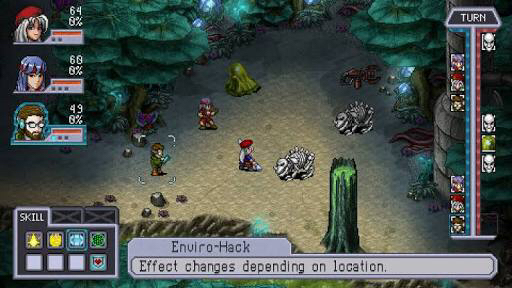
Even if the original games on the system aren’t your thing, the Vita has tremendous value as an archival system for RPG fans. Sadly, the ever-present issues with the proprietary memory cards keep it from truly reaching its potential in this regard, but the largest card size can fit at least several months’ worth of great RPG gaming on it. One can’t help but wonder what might have been in another reality, but even in this one, where the PlayStation Vita fell flat on its face, things turned out fairly well for RPG fans. There may not be a successor to the Vita, and in fact, it seems incredibly unlikely, but if this is all there is, at least Sony’s handheld ventures went out on a good note for RPG lovers. After all, as the tired movie quote says, you either die a hero, or you live long enough to see yourself become the villain.
I’m sure that has nothing to do with the next part’s topic, though.
Shaun’s Five For The Vita Era
For each part of this series, I’ll be selecting five notable or interesting titles to highlight. If you’re looking to get a good cross-section of the era in question, these picks are a good place to start.
Persona 4: Golden – For the first year or so of the Vita’s life, this was the title to own for the machine. An updated version of Atlus’s excellent PlayStation 2 RPG, it’s challenging, stylish, and fun. This is the best version of the game thus far and it’s Vita-exclusive, making it an excellent choice for RPG fans who own the machine.
Hyperdimension Neptunia Re;Birth 1 – I’ve always maintained that different RPG fans look for different qualities in RPGs. If you’re the sort that doesn’t care much about gameplay mechanics and just wants an enjoyable story with charming characters, you could do a lot worse than getting on board the Nep-Nep train on Vita. Not an exclusive by any means, but I tend to think of the Vita as the unofficial home of this franchise.
Oreshika: Tainted Bloodlines – This is one of the most interesting RPGs that almost no one has played. You play as a cursed family whose members are doomed to die within two years of birth and can’t procreate with other humans. Fortunately, a means of age hyper-acceleration means you’re not stuck with a bunch of toddlers, but your time with each character is quite limited. Although you can’t produce children with humans, you can hook up with various spirits and gods, creating generation after generation of characters all working towards the goal of lifting the family curse. This game is top-to-bottom unique and awesome, and it’s 100% Vita exclusive.
Final Fantasy X/X-2 HD – There are lots of places to play these games. They’ll probably even be on mobile sooner or later. But this collection is, for now, the only way to play these games on a handheld, and X-2 in particular greatly benefits from a pick up-and-play approach. It also represents one of Square Enix’s bigger commitments for the platform, at least until recently. Plus, how can you not have the whole Final Fantasy series through X-2 on the only handheld where that is possible?
Ys: Memories of Celceta – Ys fans are mixed about this installment, but if you enjoyed Ys Seven on the PSP, you’ll probably like Memories of Celceta, too. It’s one of the better action-RPGs available on the Vita platform, so if you’ve got a hankering for something a little more fast-paced than turn-based, you’ll want to pick this up for sure. Realistically, though, you can’t go wrong with any of Falcom’s Vita releases.
That’s all for the penultimate chapter of our on-going History Of Handheld RPGs feature. Please let me know what you think by commenting below, posting in the Official RPG Reload Club thread, or by tweeting me at @RPGReload. As for me, I’ll be back next week with a look at Dungeon Village. Thanks as always for reading!
Next Week’s Reload: Dungeon Village ($5.99)